Mario Bava and Italian genre film: Horror
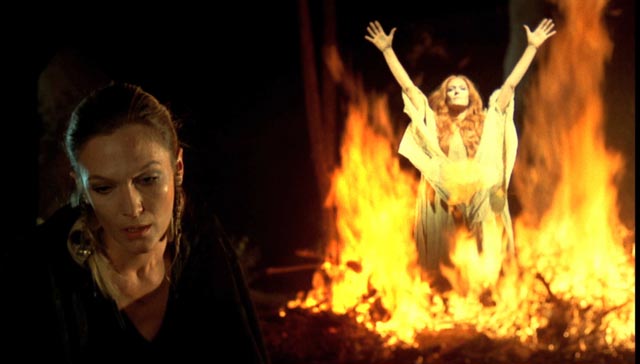
Different nationalities produce different inflections within the same genre. Of course, there’s a lot of cross fertilization because movies easily travel across borders. England, which traditionally had been very censorious towards horror, produced something of an international renaissance when a small studio named Hammer decided to create full-colour and more graphically violent remakes of classics from Hollywood’s early ’30s fling with the genre – movies which in turn had been (highly altered) adaptations of classic Gothic novels and occasional modern pulp works. The success of Hammer’s first few releases (Curse of Frankenstein [1957], Horror of Dracula [1958], The Mummy [1959]) inspired American-International in the States to back Roger Corman’s move from cheap black-and-white B-movies to his more opulent, colour adaptations of short stories by Edgar Allen Poe. They also inspired what was essentially an entirely new genre for Italian cinema, where native horror had been all but non-existent.
The first genuine Italian horror film was I Vampiri (1957), co-directed by Riccardo Freda and Mario Bava, a black-and-white movie which grafted horror elements onto something which more closely resembled a crime film. Two years later, Bava completed another movie started by Freda, Caltiki, The Immortal Monster (1959), which harked back to Hammer’s earlier Quatermass features. But it was the following year in which he really launched horror as a significant element of Italian film production with his elegant, visually stunning Black Sunday (1960), a film which reached back to the Universal horrors of the ’30s, while grafting on some of the graphic violence of Hammer’s films.
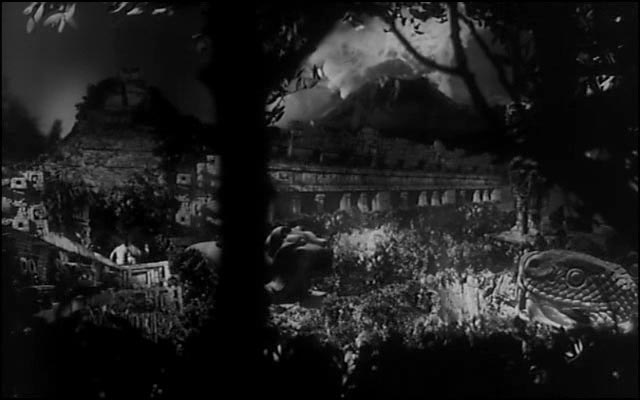
Given Bava’s prominence in Italian horror and his significant influence on most other Italian directors in the genre, it seems surprising to realize that he actually made only half a dozen or so “pure” horror films. (There are elements of horror in a number of his other films – peplum [Hercules in the Haunted World, 1961], thrillers [Blood and Black Lace, 1964; Hatchet for the Honeymoon, 1970]), science fiction [Planet of the Vampires, 1965].) But that handful constitute one of the richest bodies of work in the genre, steeped in Gothic atmosphere, shot through with (often perverse) sexuality, and rendered in exquisite visual terms which transcend the occasional absurdities of their scripts. Bava’s work represents something as purely cinematic as the work of far more revered filmmakers (such as his countrymen Fellini and Antonioni), and yet because he inhabited what were considered the lower regions of commercial movie-making, he remained an obscure figure for most of his career, rediscovered after his death and eventually revered by later audiences and critics.
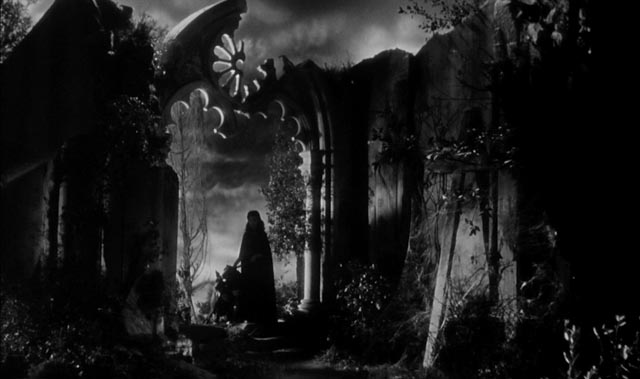
Bava, the son of one of the great pioneers of Italian cinematography and special effects, Eugenio Bava, was himself initially a cinematographer, shooting shorts, documentaries and features going back to the late ’30s. He was renowned for his ability to create remarkable visual effects with limited means, a talent he brought to his own later directorial efforts (many of which he photographed himself). These skills always made his work look bigger and richer than would be expected from the meagre budgets at his disposal. It was the visual quality he brought to his films which gained them their initial attention, while he garnered less respect for his storytelling abilities or his work with actors. And yet there are many fine performances in his films, going all the way back to Barbara Steele’s star-making turn in Black Sunday, a film which derives much of its power from Bava’s use of her distinctive beauty. In addition, Bava drew one of Boris Karloff’s finest performances from the then 76-year-old actor in The Wurdalak, the longest of the three stories in Black Sabbath (1963).
Despite his remarkable visual sense, there was obviously something more than images to Bava’s success as a director, a fact confirmed by the superiority of his films to the movies of many of those who imitated him (Mario Caiano and Antonio Margheriti among others). These imitators used the trappings of Gothic settings and twisted sexuality, but their movies generally lack the richness of atmosphere and thematic resonance of Bava’s best work. Bava was an authentic cinematic master.
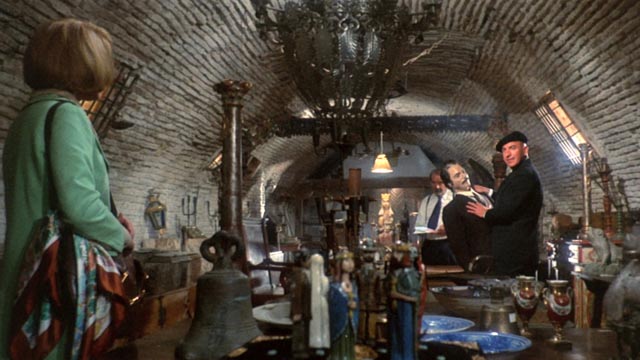
Decades after his death, Bava has been raised to the pantheon by adoring fans and critics, not least of course by Video Watchdog’s Tim Lucas, whose awe-inspiring and intimidating Mario Bava: All the Colors of the Dark is surely the single largest book ever written about one filmmaker. So I won’t say too much here about the films themselves, but rather just highlight the excellent work Arrow Video have been doing with their on-going series of Blu-ray releases. The company has been lavishing a great deal of attention on these disks, packing each release not only with extras and commentary tracks (the latter not surprisingly provided by Tim Lucas, whose detailed knowledge of each film is enhanced by an engagingly conversational tone), but also with variant versions of the films themselves – it was pretty much standard practice at this level of production for movies to be altered and reshaped to accommodate different markets.
*
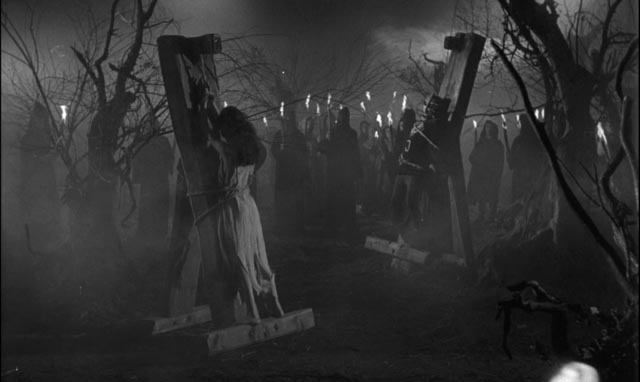
The Mask of Satan/Black Sunday (1960)
Black Sunday not only marked Bava’s official debut as a director, but also stands as one of the key horror films in cinema history. The story of a pair of rational men, doctors who stop on their way to a medical conference and inadvertently reawaken a very angry witch who was burned to death centuries earlier, it’s a brilliant treatment of horror’s quintessential theme of the return of the repressed. Here, powerful female sexuality rises up to shatter a deeply entrenched patriarchal society.
Arrow’s 2013 release is, as they say, “definitive”. This dual-format three-disk edition presents the film in no less than three versions: The Mask of Satan, the original Italian-language release; the same cut but with English-dubbed track for international distribution; and finally American-International’s re-cut, re-scored Black Sunday. This Gothic masterpiece looks terrific in hi-def, Bava’s sculpted lighting creating one of the most atmospheric moods ever put on film. Tim Lucas’ commentary, recorded for a 1999 DVD edition, is joined by an introduction from critic Alan Jones; an interview with Barbara Steele, also from an earlier DVD; a scene (wisely) deleted from the Italian version; Italian, international and U.S. trailers; an extensive collection of trailers covering much of Bava’s career; and finally I Vampiri (1957), a film started by Riccardo Freda, who walked off in a dispute with the producers, and completed by Bava, who was also its cinematographer.
*
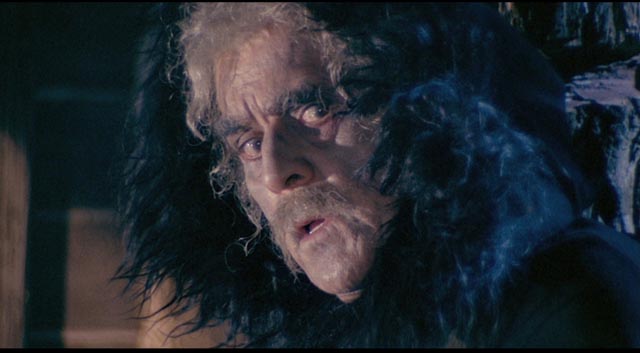
I tre volti della paura/Black Sabbath (1963)
Bava waited three years after Black Sunday before making I tre volti della paura, his second horror film (with five other features between), this time bringing his remarkable facility with colour to a trio of stories. As is usually the case with anthologies, the stories vary in quality, the weakest being The Telephone, in which a woman is tormented by increasingly threatening phone calls which appear to be from a former lover recently released from prison. The other two stories are much stronger, with The Wurdalak providing a decidedly creepy and original take on traditional vampire legends (here, a family’s father returns to prey on his own children – and in the film’s most disturbing scene, his baby grandson), while The Drop of Water is an intense variation on Poe’s theme of conscience made manifest driving a wrong-doer to madness.
The most interesting aspect of this release is the opportunity it affords to compare the original Italian version with AIP’s radically altered, re-cut and re-scored Black Sabbath. The biggest difference is in the re-ordering of the three stories. The Italian release begins with The Telephone, places The Wurdalak in the middle, and ends with The Drop of Water. AIP put the intense The Drop of Water first, placed the much weaker The Telephone second, and ended with The Wurdalak. In addition, Karloff’s introductions to the film and the individual stories were shot in very different styles for the Italian and U.S. editions, giving the AIP version a slightly lighter (and supposedly more kid-friendly) tone.
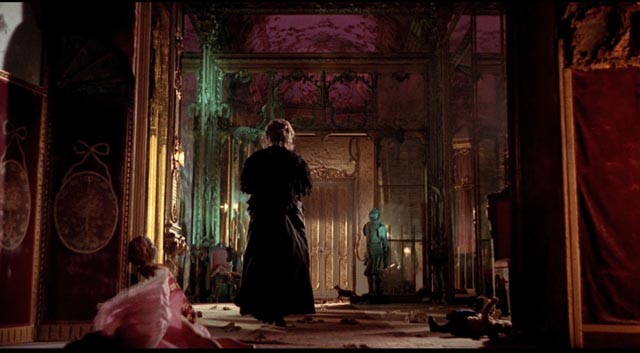
Apart from the major structural differences, AIP’s meddling is most noticeable in The Telephone, a story which in neither version makes much sense. AIP goes through some real contortions to obscure, if not eliminate, the underlying implications of lesbianism which are very apparent in the Italian cut. Additionally, AIP’s version shows far less sensitivity to the use of sound, obliterating the subtle and disturbing use of detailed effects and, more importantly, silences in The Drop of Water and smothering everything under Les Baxter’s far more conventional musical score. This alteration in the soundtrack seriously undermines the carefully modulated escalation of paranoia in the story. (I confess that I much prefer the original Italian scores to any of Baxter’s replacements on Black Sunday, Black Sabbath and the thriller The Girl Who Knew Too Much.)
Arrow once again presents the films in a three-disk dual-format edition, with a Lucas’ commentary on the Italian cut. This commentary and the lengthy featurette Twice the Fear go into great detail about the differences between the two versions, highlighting the subtleties of Bava’s work and the coarsening effect of AIP’s changes. There’s also another introduction from Alan Jones, an interview with actor Mark Damon sourced from an earlier DVD, and international and U.S. trailers. The booklet has a critical appreciation by David Cairns, an essay about the differences between versions by Tim Lucas, plus an interview Lucas conducted with AIP’s Samuel Z. Arkoff about the producer’s experiences with Bava.
*
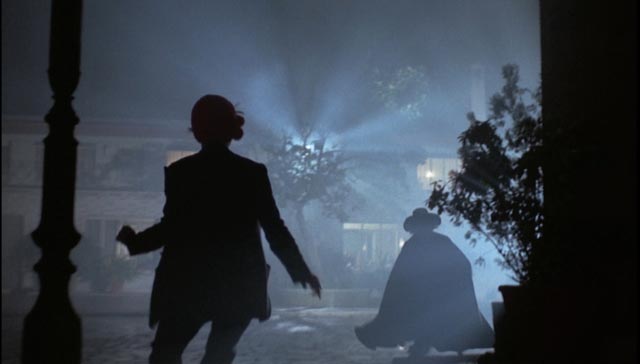
Baron Blood (1972)
Baron Blood was Bava’s final full-on horror film, and in many ways it’s his most conventional, more reminiscent of American-International’s revisions of his earlier films than those films themselves. A young American descendant of an old Austrian family travels back to his sinister ancestor’s castle to rediscover his roots and, not surprisingly, manages to reawaken the brutal Baron who was burned hundreds of years earlier by angry villagers. In rough outline, this bears an obvious resemblance to Black Sunday, but Baron Blood for the most part lacks that film’s rich atmosphere. However, it’s not without interest. For one thing, producer Alfredo Leone managed to persuade Bava to leave the comforts of home and go shoot on location in a real Austrian castle, giving the film a different tone from the more controlled studio productions. The castle gives it a larger sense of scale, if perhaps less atmosphere.
Leone had wanted to cast Vincent Price as the titular villain (which would have made it seem even more of an AIP production), but the star had had a disagreeable experience with Bava on the disastrous spy spoof Dr. Goldfoot and the Girl Bombs (1966) and declined, which actually worked to the film’s benefit. As an alternative, the 67-year-old Joseph Cotton was cast as Alfred Becker, a wealthy wheelchair-bound American who buys the castle … and who very unsurprisingly turns out to be a thinly disguised alter ego of the newly resurrected Baron Otto von Kleist. Cotton brings a charm and sly humour to the role which adds a touch of class to the proceedings, while Elke Sommer makes a perky heroine.
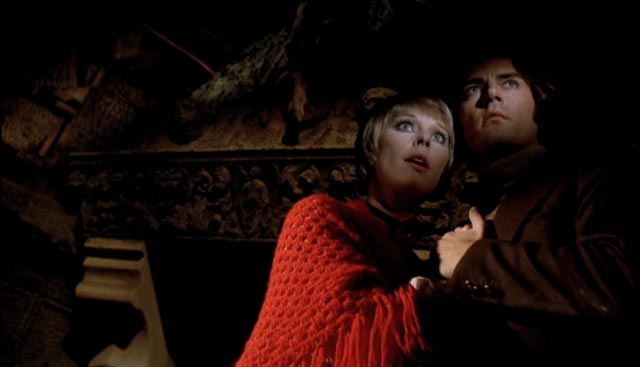
As with Black Sabbath, Arrow provide three versions of the film: the oddly titled Italian original, Gli orrori del castello di Norimberga (at no point is Nuremberg ever mentioned, and the story is explicitly set in Austria, not Germany), the European export version with English dubbing, and the AIP version, re-cut, re-dubbed and re-scored once again by the bombastic Les Baxter. Lucas provides a commentary for the European export version; Alan Jones provides another introduction; director Ruggero Deodato talks about Bava and Italian horror in a featurette which has little to do with Baron Blood; and there are trailers and radio spots, plus a gallery of photos of Bava at work behind the scenes of a number of movies.
Critic James Oliver’s booklet essay attempts to boost the film’s reputation, and situates it in the context of a period when horror was undergoing major changes, with the upheavals of the ’60s increasingly rendering the Gothic as irrelevant. Elke Sommer’s extremely short mini skirts are akin to Hammer’s dire attempt to update Dracula by surrounding him with “swinging” young people in Dracula A.D. 1972.
*
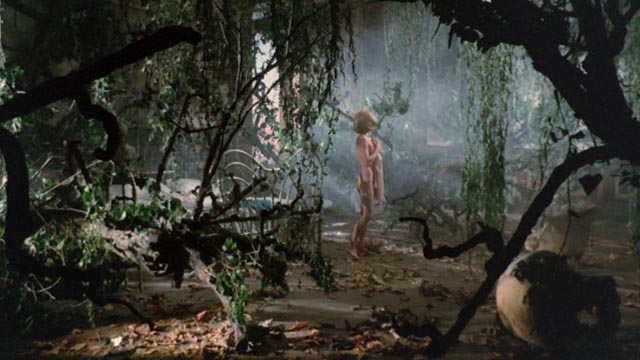
Lisa and the Devil/The House of Exorcism (1973/75)
Bava’s masterpiece Lisa and the Devil is a surreal fantasy rather than horror, a dreamlike work reminiscent of Bunuel in its subtly comic commentary on a declining bourgeoisie. Because of the commercial success of Baron Blood, producer Alfredo Leone rewarded Bava by giving him the freedom to make whatever movie he wanted, and this was what the director came up with. At once his most original work as well as his most perverse, its dreamlike narrative embodies adultery, incest, impotence, necrophilia, murder and matricide, all contained within a languid ambiance suggesting a world outside of time, or perhaps embodying all time collapsing in on itself.
Lisa (Elke Sommer again) is an American in Spain who finds herself straying from the well-traveled tourist path and drawn into strange events at a large, decaying villa populated by what may or may not be ghosts condemned to re-enact a family tragedy. These events are presided over by the sinister Leandro (Telly Savalas), who may or may not be the Devil himself toying with these lost souls.
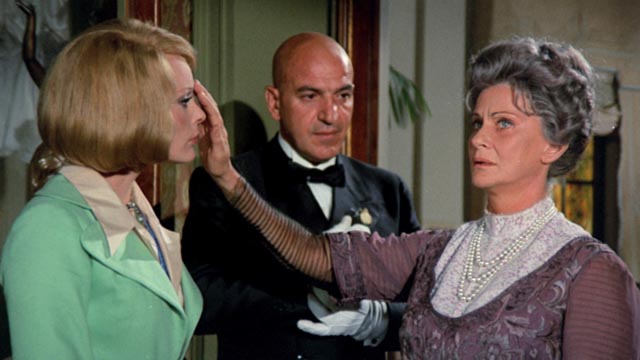
One of Bava’s richest and most creative films, Lisa and the Devil was unable to find distribution despite success with audiences at the 1973 Cannes Film Festival, prompting producer Alfredo Leone to tear it apart and shoot an entirely new framing story to cobble together The House of Exorcism, one of the crassest of Italian Exorcist rip-offs. While Bava, recognizing that he had some responsibility to his producer, agreed to shoot some of the new material, he balked at the foul language and eventually he and Leone had a falling out. (Ironically, the closest thing to Lisa that I can think of is Harry Kümel’s Malpertuis [1971], another film steeped in a dreamlike other world of spirits, which was also brutally re-edited by its producer after screening at Cannes.)
In this travesty, poor Elke Sommer is confined to a bare hospital room, supposedly possessed by a demon. A priest, Father Michael (Robert Alda), arrives to boot the evil spirit out of her, prompting much projectile vomiting (at one point with live frogs) in between chunks of the original film which now seem to represent a dimension of Hell to which Lisa’s soul has been sent while the evil spirit possesses her body. The whole effect is akin to someone scribbling a beard and moustache on the Mona Lisa with a Sharpie.
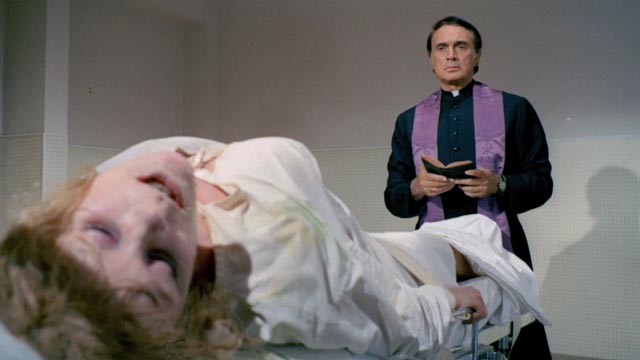
It seems almost tragic that, while Lisa and the Devil, Bava’s most personal film, was a complete commercial failure, The House of Exorcism turned out to be one of Italy’s most profitable imitations of William Friedkin’s big hit. What should have been the pinnacle of the director’s career was instead virtually the end of it. The film which followed, a realistic thriller called Rabid Dogs, a complete departure for Bava, remained unfinished until many years after his death, while his final feature, Shock (1977), partially directed by Mario’s son Lamberto, seemed derivative of the work of lesser filmmakers who had themselves been Bava’s imitators.
Arrow’s three-disk dual-format edition presents both versions, with a Tim Lucas commentary on Lisa and a second commentary, with producer Leone and Sommer, on The House of Exorcism (both sourced from earlier DVDs); introductions to both films by critic Alan Jones; a deleted scene (also previously seen on various DVD editions) showing a more explicit sexual encounter between co-stars Sylva Koscina and Gabriele Tinti; original trailers for The House of Exorcism and an unfinished trailer for Lisa; and a poorly made and rather confusing Italian featurette about the making of both versions in which Alberto Pezzotta, a biographer of Bava, strangely asserts that Lisa and the Devil was a toned-down version of the project made for television, while the more explicit material in The House of Exorcism marks it as the theatrical version.
In the booklet, critic Stephen Thrower expresses great admiration for Lisa and the Devil and vehement contempt for House of Exorcism, plus there’s an interview with Bava from 1976 in which he says of the latter, “The House of Exorcism is not my film, even though it bears my name. It is like the situation whereby a cuckolded man is found to have a son that is not his but has his name, but there is nothing he can do about it.”
*
With each of these films, and others yet to be mentioned, I have opted for the U.K. Arrow editions rather than the U.S. releases from Kino Lorber, because in almost every case the Arrow disks are more comprehensive, with a wider array of supplements, although for the most part (according to DVD Beaver) the transfers themselves are generally comparable. The most important difference, however, is Kino’s decision to limit most of their releases to English-dubbed versions of the films, without the option to choose Italian language audio with subtitles.
Interestingly, the AIP versions of both Black Sunday and Baron Blood have actually been reconstructed using Arrow’s transfers of the European cuts, re-conforming the material to match the American soundtracks, rather than sourcing actual AIP prints. In the case of Baron Blood, this has resulted in at least one “inaccuracy” as a graphic shot of a character’s cut throat was not visible in the U.S. cut as it is here; an alternate take had been used which obscured the wound with the man’s collar for the American market.
Additionally, the transfer of AIP’s version of Black Sabbath is noticeably inferior to that of I tre volti della paura; the latter is Arrow’s own transfer, but the former was supplied to Arrow by MGM.
Next: Bava’s thrillers.
Comments